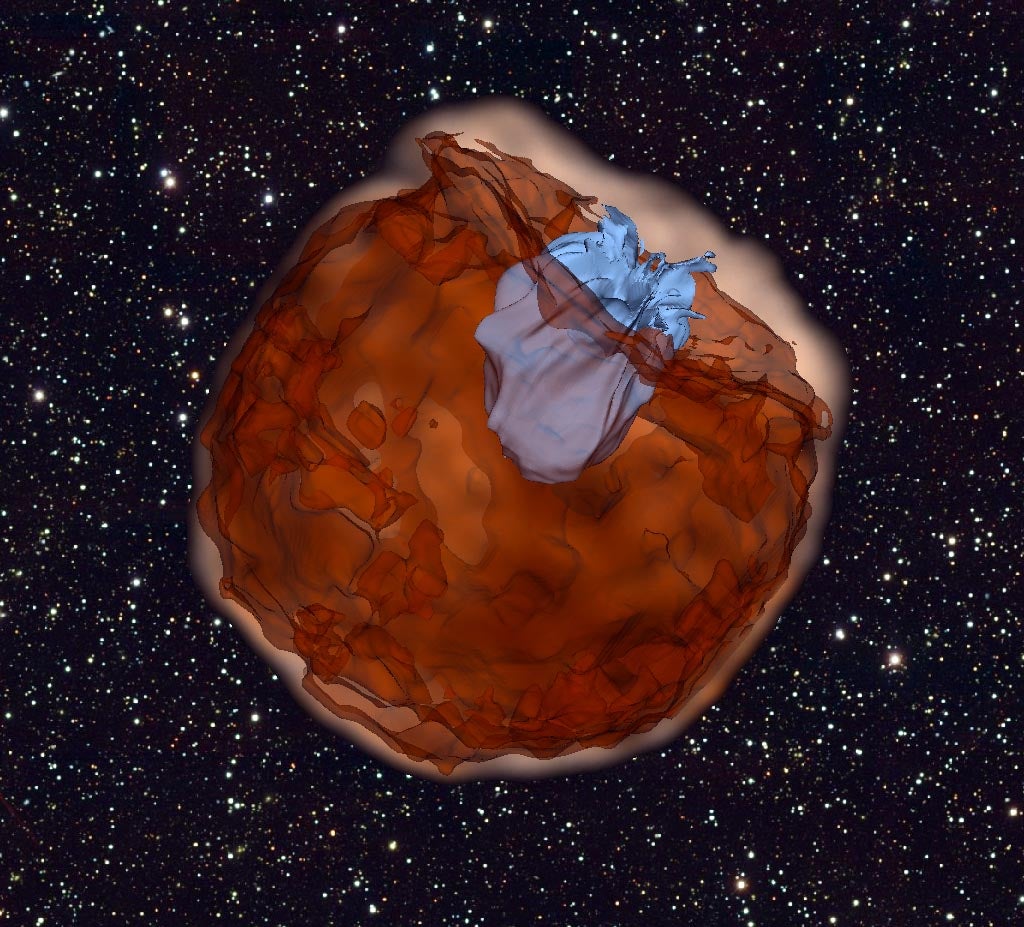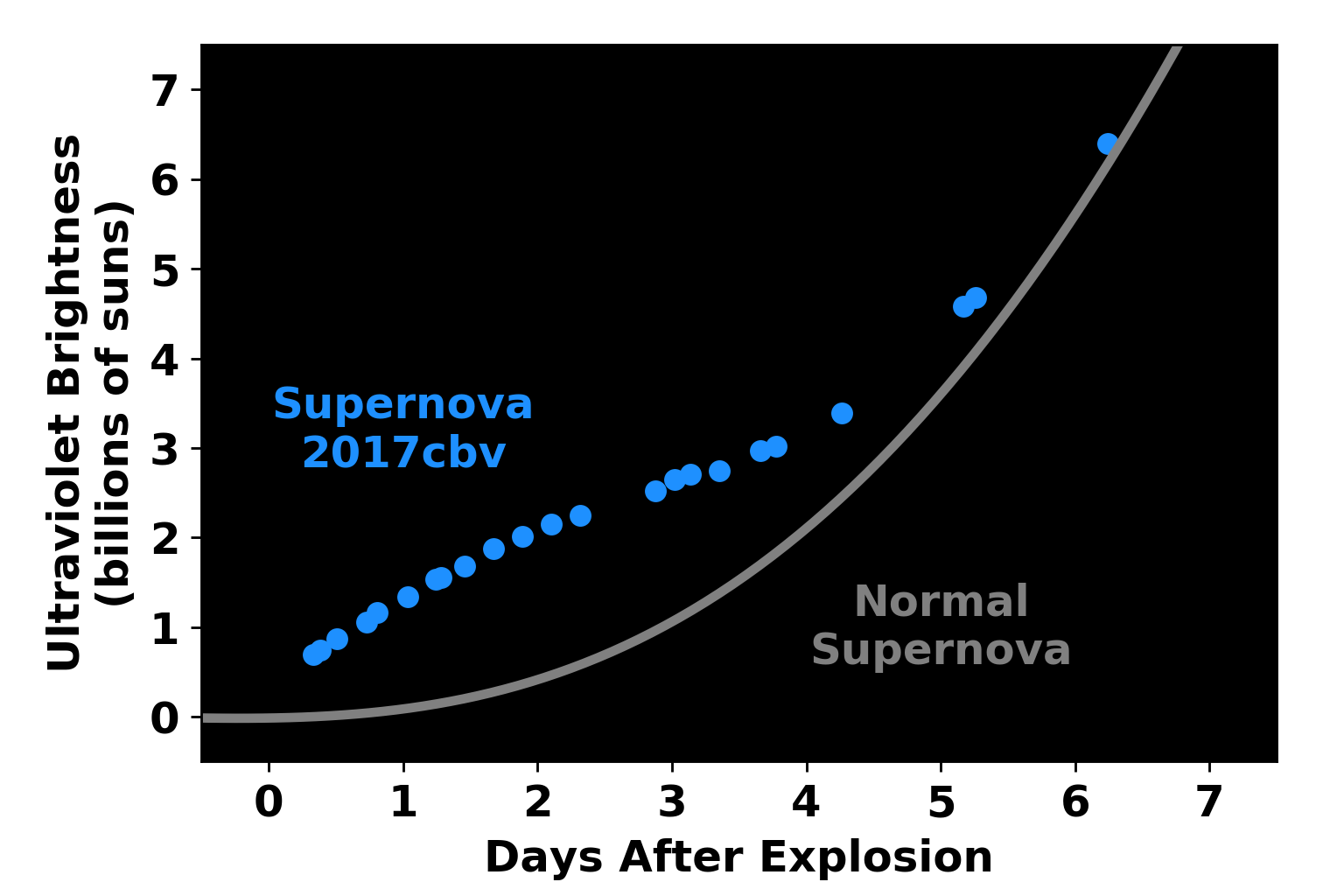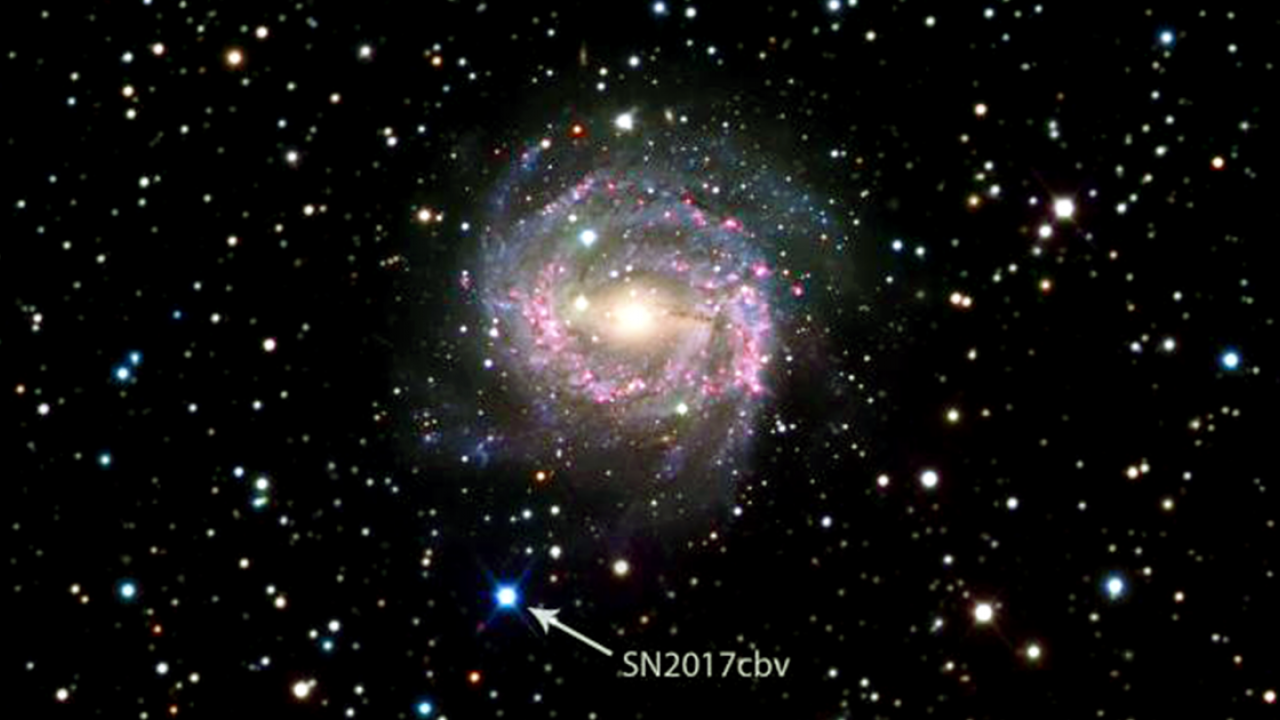Astronomers have spied the short-lived blue glow from a giant companion star struck by a spectacular supernova. The discovery offers compelling evidence for a leading theory about the origin of Type Ia supernovae — that these enormous explosions occur when a white dwarf steals matter from a larger star.

“This is an amazing result,” said study co-author Stefano Valenti, an assistant professor of physics at the University of California, Davis. “We are unlocking the origins of supernovae.”
Incredibly bright, Type Ia supernovae are used to track how fast the universe is expanding. But there are problems with relying on supernovae as cosmic mile markers. For example, although evidence suggests Type Ia supernovae are triggered in binary systems (two stars orbiting each other), astronomers still puzzle over the identity of the white dwarf’s companion star. “A better understanding of the physics of Type Ia supernovae will improve our measurements of the expansion of the universe,” Valenti said.
To help solve the puzzle, Valenti and astronomer David Sand, an associate professor at the University of Arizona, designed the DLT40 survey to find supernovae within a few hours after the explosion. This is early enough to determine the details of the shocked companion star from the glowing blue ultraviolet light it produces, Valenti said. The DLT40 survey uses the PROMPT telescope in Chile to monitor galaxies within 40 megaparsecs (120 million light-years).
Earlier this year, the DLT40 survey spotted a new supernova, now named SN 2017cbv. It was one of the earliest detections ever, within a day, perhaps even hours, of its explosion, said Sand, the first to spot the supernova.
Within minutes of SN 2017cbv’s detection, Sand activated Las Cumbres Observatory's global network of 18 robotic telescopes. Thanks to the early detection, the research team caught the entire five-day-long rise and fall of the explosion’s blue glow, said Griffin Hosseinzadeh, the study’s first author and a graduate student at the University of California, Santa Barbara.
“We’ve been looking for this effect — a supernova crashing into its companion star — since it was predicted in 2010. Hints have been seen before, but this time the evidence is overwhelming,” Hosseinzadeh said.

Catching the blue glow from SN 2017cbv was only possible through the collaboration between the DLT40 survey and Las Cumbres Observatory, said Valenti, who runs the DLT40 survey from UC Davis. “Most supernova are discovered too late. This result was not possible without very early discovery and continuous observation,” he said.
The team determined that the companion star was approximately 20 times the radius of the sun. (Although a white dwarf is about the same mass as the sun, its size is similar to Earth.) The supernova was discovered on March 10, 2017, and is located 55 million light-years away in the galaxy NGC 5643. The results will be published in an upcoming issue of The Astrophysical Journal Letters and are available on arXiv.org.
Media Resources
Stefano Valenti, UC Davis Division of Mathematical and Physical Sciences, 424-270-4461, valenti@ucdavis.edu
Andy Fell, UC Davis News and Media Relations, 530-752-4533, ahfell@ucdavis.edu
